Is your indoor plant struggling to thrive? The key to a lush, vibrant houseplant may lie in the potting mix you choose. With so many options available, picking the right one can be tough. Discover the secrets to selecting the perfect potting mix and make your indoor oasis flourish.
Choosing the best potting mix for indoor plants is key to their health and success. Potting soil might not be the most thrilling topic, but it’s crucial for your houseplants’ growth and performance. Potting mixes are made for plants in containers, which have different needs than those in the ground. By knowing what’s in your indoor plant soil and the differences between soil types, you can give your plants the best growing conditions.
Understanding Potting Soil vs. Potting Mix
Choosing the right growing medium for your indoor plants is key. Potting soil and potting mix are often confused with each other but have big differences. These differences affect how healthy and lively your houseplants will be.
Potting Soil vs. Garden Soil
Potting soil is made just for containers. It’s lighter and more open, which helps with drainage and air for roots. It might have some real soil, plus peat moss, compost, or bark. Garden soil, however, is for planting in the ground. It’s too heavy and can cause waterlogging and damage in pots.
Potting Soil vs. Topsoil
Topsoil is the top layer of soil but not great for indoor pots. It’s dense and can block air and water flow. It might also have weeds, pests, or contaminants that can hurt your plants. Potting mixes are made to be light, clean, and drain well, perfect for indoor plants.
Knowing the differences between potting soil, garden soil, and topsoil is important for choosing the best for your indoor plants. A good potting mix gives your plants the best chance for strong growth and beautiful leaves.
“The right potting mix can make all the difference in the health and longevity of your indoor plants.”
Types of Potting Mixes
Choosing the right potting mix is key for your indoor plants. There are all-purpose and specialty mixes. Knowing what your plants need helps you pick the best mix for their growth and health.
All-Purpose Potting Mix
An all-purpose potting mix works well for many plants. It’s good for indoor and outdoor plants, like houseplants and hanging baskets. This mix has the right balance of nutrients and keeps moisture in, making it versatile.
Specialty Potting Mixes
While all-purpose mixes are handy, some plants need special mixes. For example, potting mix for succulents and potting mix for orchids are made just for them. Succulents like soil that drains well, and orchids do best in a mix without soil.
Knowing what your plants need lets you pick the best potting mix. This ensures they get the right conditions for growth and stay healthy.
“The right potting mix can make all the difference in the world for your indoor plants.”
The best potting mix for indoor plants
Choosing the best potting mix for indoor plants is key. You need to think about what your plants need. A top-notch, well-draining potting mix with lots of organic stuff is great for most indoor plants.
These potting mixes are light, airy, and keep the right amount of moisture and nutrients. They help your houseplants grow strong and healthy. Picking the right indoor plant soil means your plants will do well.
Key Factors to Consider
- Drainage and aeration: The potting soil for houseplants should drain well to stop waterlogging and give roots enough oxygen.
- Nutrient content: A potting mix full of organic stuff like compost or peat moss gives plants the nutrients they need.
- pH balance: The best potting mix for indoor plants should match the pH your plants like.
- Lightweight texture: A light, fluffy indoor plant soil lets roots grow well and stops the soil from getting too dense.
Think about these factors to pick the perfect potting mix for your indoor plants. This will help them stay healthy and strong.
“The right potting mix can make all the difference in the growth and success of your indoor plants.”
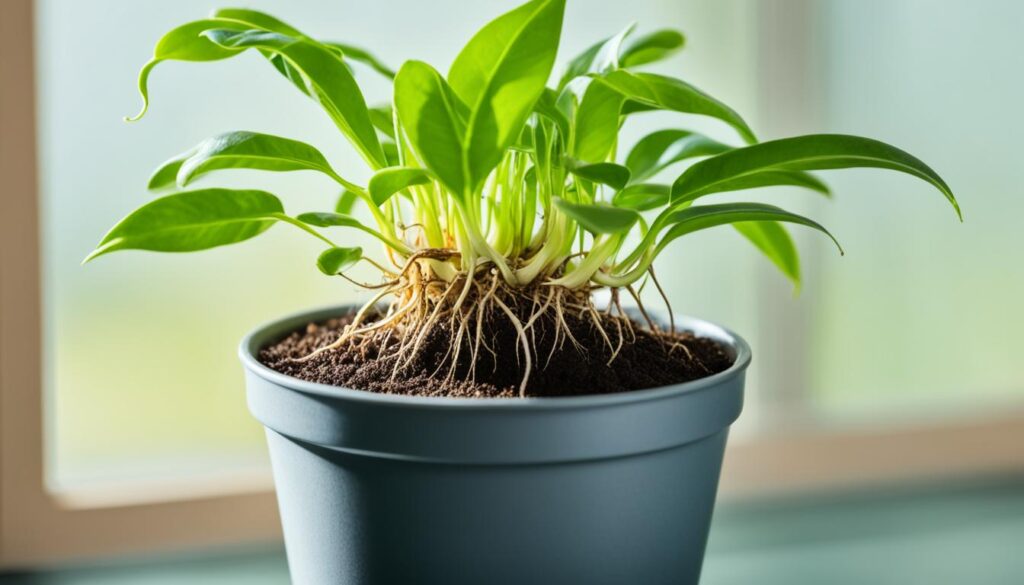
Key Components of a Good Potting Mix
Making the perfect potting mix for your houseplants is key to their health. It’s a mix of organic and inorganic materials, plus fertilizers and additives. Let’s look at what makes a potting mix rich in nutrients and drains well.
Organic Materials
Organic materials are the heart of a great potting mix. They give plants the nutrients they need and keep the soil moist. Here are some common organic parts:
- Peat moss: Keeps water in and shapes the soil well.
- Coconut coir: A green choice instead of peat moss, it holds water great.
- Compost: Packed with organic stuff and good bugs for the soil.
Inorganic Materials
Inorganic stuff is crucial for good drainage and air in the soil. They stop the soil from getting too dense and waterlogged. Here are some important inorganic parts:
- Perlite: Light and full of holes, it makes the soil airy and well-drained.
- Vermiculite: Gets big to keep moisture and nutrients, helping roots grow strong.
Fertilizers and Additives
A top-notch potting mix has the right mix of fertilizers and additives for your plants. These can be:
| Fertilizer Type | Benefits |
|---|---|
| Slow-release organic fertilizers | Give plants steady nutrients over time. |
| Lime | Keeps the soil’s pH right for better nutrient use. |
By picking and mixing these key parts, you can make a potting mix that helps your houseplants grow strong and healthy.
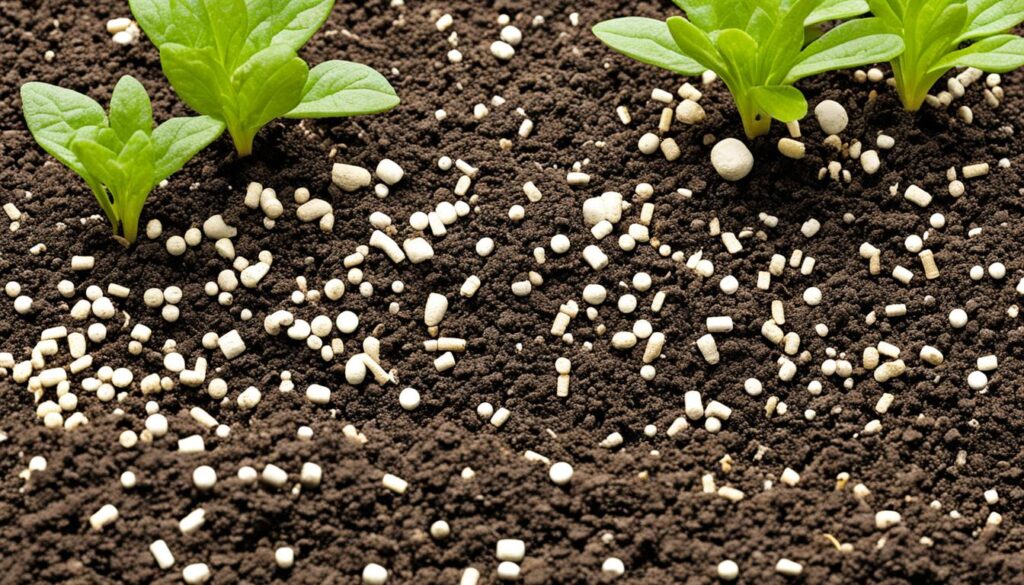
Conclusion
Making the perfect potting mix for your indoor plants is a rewarding task. It can really boost the health and vitality of your houseplants. You now know the differences between potting soil, garden soil, and topsoil. This knowledge helps you pick the best potting soil for houseplants.
You’ve learned about the various types of potting mixes. This lets you choose the right mix for your plants, whether it’s a general mix or a special one.
Understanding the key parts of good indoor plant soil is crucial. This includes organic materials, inorganic additives, and fertilizers. With this knowledge, you can make a great environment for your plants.
Now, you can confidently pick the best potting mix for indoor plants. This ensures your indoor plants will grow well and make your space look beautiful.
Use what you’ve learned to create a lush indoor garden. Choosing the right potting soil for houseplants sets your plants up for success. They’ll thrive and make your home look beautiful. Start this journey with your indoor plants and enjoy a thriving, peaceful indoor space.
FAQ
What is the difference between potting soil and potting mix?
Potting soil might include real soil or not. Potting mix, on the other hand, is a mix without soil. It’s a blend of organic and inorganic stuff that’s light, sterile, and drains well. This makes it perfect for growing plants in pots.
What are the benefits of using a well-draining potting mix for indoor plants?
Using a potting mix that drains well and is full of organic stuff is key for your indoor plants. It keeps the right amount of moisture, lets air in, and gives plants the nutrients they need to do well.
What are the different types of potting mixes available?
There are many potting mixes for different plants. All-purpose mixes work for most indoor and outdoor plants. But, there are also special mixes for plants like succulents, cacti, or orchids.
What are the key components of a good potting mix?
A great potting mix has organic stuff like peat moss and compost, and inorganic stuff like perlite and vermiculite. It also has fertilizers and additives to help plants grow well indoors.
How do I choose the best potting mix for my indoor plants?
Picking the right potting mix means thinking about what your plants need. Look for a mix that drains well, is full of organic stuff, and is made for growing plants in pots. This is usually the best choice for most houseplants.


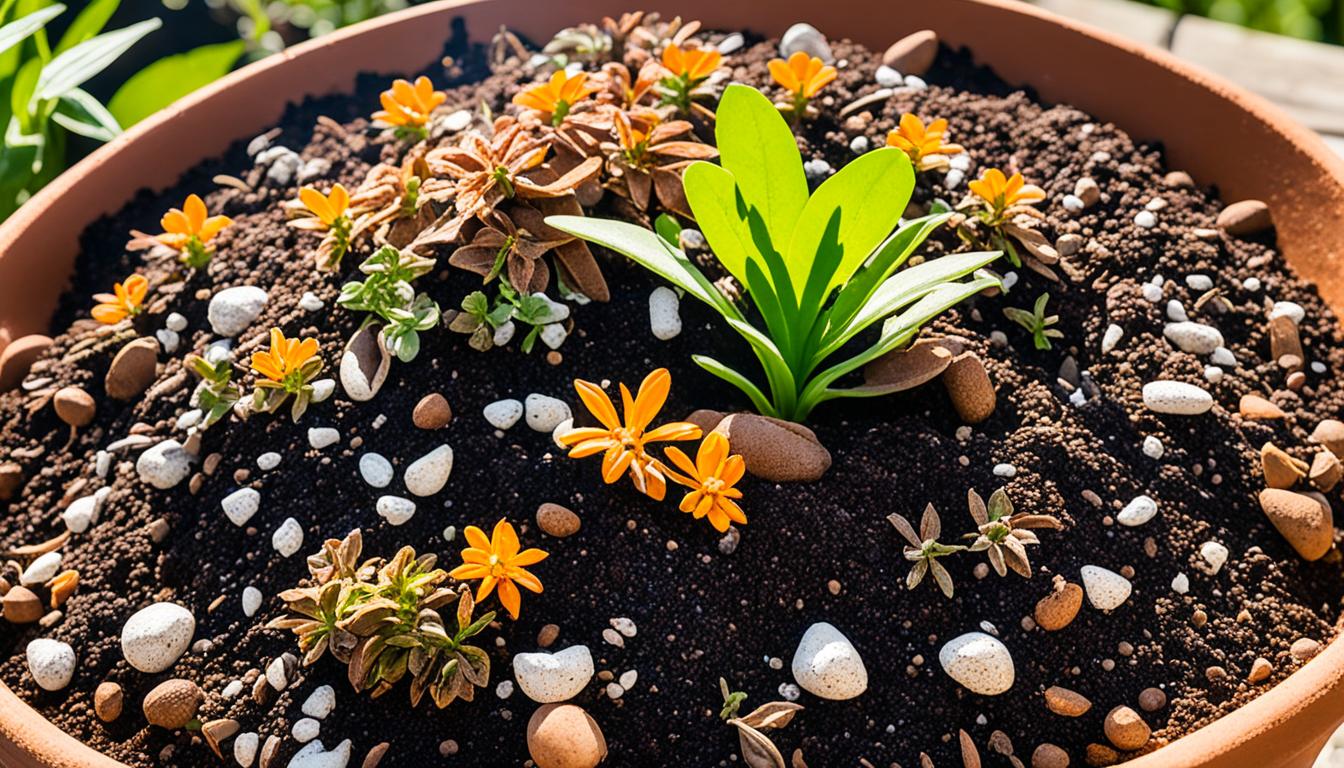
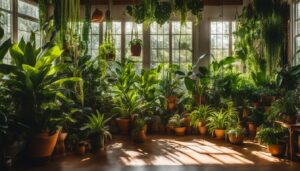
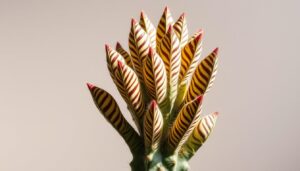
Pingback: Dracaena, The Stylish, Easy-Care Houseplant That Thrives in Low Light
Pingback: Pixie Lily, The Petite Flowering Houseplant That Adds a Touch of Charm Indoors
Pingback: Hoya, The Easy-Care, Small-Space Houseplant with Stunning Trailing Vines
Pingback: Spider Plant, The Hardy, Pet-Friendly Houseplant That Thrives Anywhere
Pingback: Polka Dot Plant care, How to Keep This Colorful, Moisture-Loving Plant Happy